This is named after the nearby Walnut Tree House, the area’s oldest building, dating from the mid 16th century.
Illustrations and text about the Cotton family.
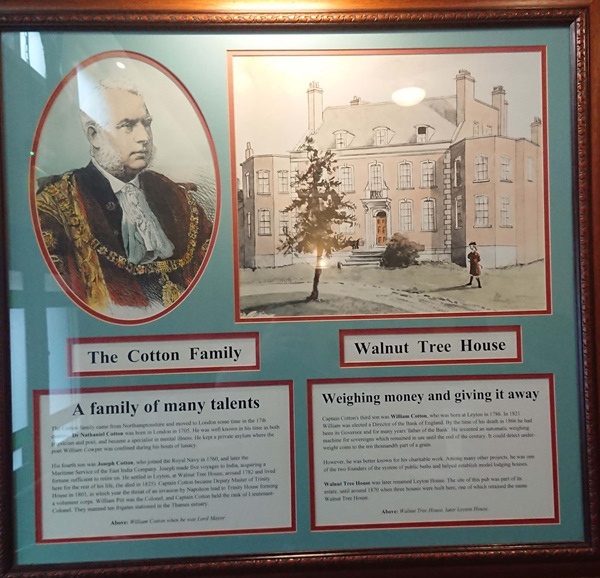
The text reads: The Cotton family came from Northamptonshire and moved to London sometime in the 17th century. Dr Nathaniel Cotton was born in London in 1705. He was well known in his time as both a physician and poet, and became a specialist in mental illness. He kept a private asylum where the poet William Cowper was confined during his bouts of lunacy.
His fourth son was Joseph Cotton, who joined the Royal Navy in 1760, and later the Maritime Service of the East India Company. Joseph made five voyages to India, acquiring a fortune sufficient to retire on. He settled in Leyton, at Walnut Tree House, around 1782 and lived here for the rest of his life (he died in 1825). Captain Cotton became Deputy Master of Trinity House in 1803, in which year the threat of an invasion by Napoleon lead to Trinity House forming a volunteer corps. William Pitt was the Colonel, and Captain Cotton held the rank of Lieutenant-Colonel. They manned ten frigates stationed in the Thames estuary.
Captain Cotton’s third son was William Cotton, who was born at Leyton in 1786. In 1821 William was elected a director of the Bank of England. By the time of his death in 1866 he had been its governor and for many years ‘father of the Bank’. He invented an automatic weighing machine for sovereigns which remained in use until the end of the century. It could detect underweight coins to the ten thousandth part of a grain.
However, he was better known for his charitable work. Among many other projects, he was one of the two founders of the system of public baths and helped establish model lodging houses.
Walnut Tree House was later renamed Leyton House. The site of this pub was part of its estate, until around 1870 when three houses were built here, one of which retained the name Walnut Tree House.
Prints and text about Royal Lodge.

The text reads: Royal Lodge stood in the High Road, opposite Davis’ Lane. It was a very old residence, and generally believed to have been a hunting lodge used by royalty when they came to hunt in the forest.
Queen Elizabeth is said to have come here, as did King James I. King Charles II has the strongest connections with the place, not least because of the underground passage which once led below the High Road to The Cedars opposite, which was occupied by Nell Gwyn.
The original Royal Lodge was destroyed by fire in 1878, and was rebuilt.
A photograph and text about John Drinkwater.
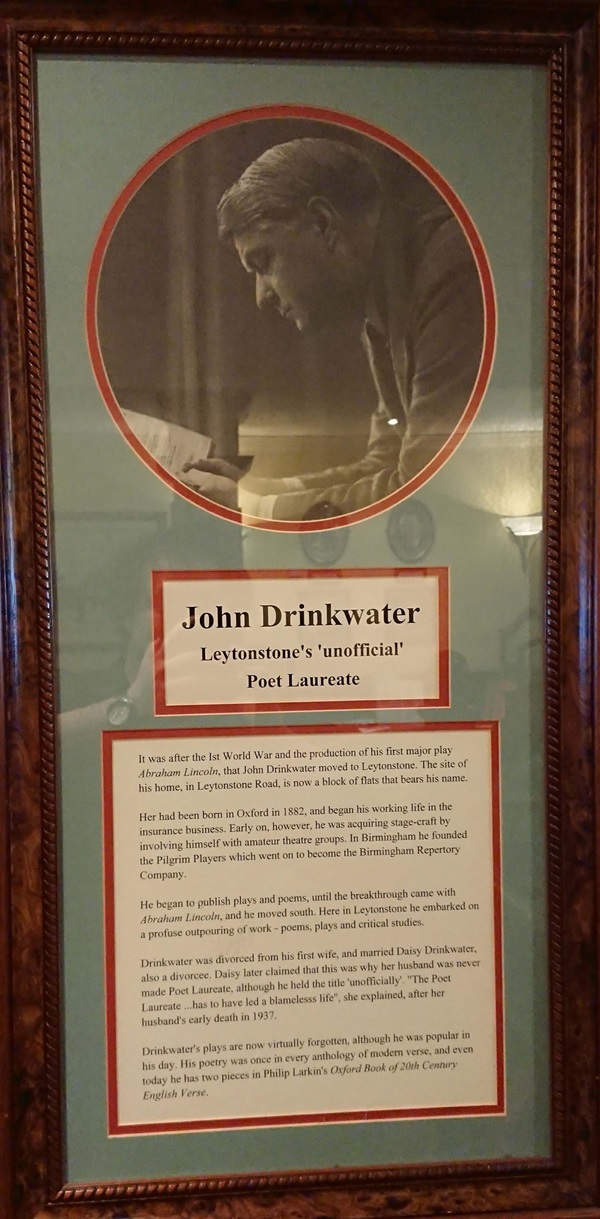
The text reads: It was after the 1st World War and the production of is first major play Abraham Lincoln, that John Drinkwater moved to Leytonstone. The site of his home, in Leytonstone Road, is now a block of flats that bears his name.
He had been born in Oxford in 1882, and began his working life in the insurance business. Early on, however, he was acquiring stage-craft by involving himself with amateur theatre groups. In Birmingham he founded the Pilgrim Players which went on to become the Birmingham Repertory Company.
He began to publish plays and poems, until the breakthrough came with Abraham Lincoln, and he moved south. Here in Leytonstone he embarked on a profuse outpouring of work – poems, plays and critical studies.
Drinkwater was divorced from his first wife, and married Daisy Drinkwater, also a divorcee. Daisy later claimed that this was why her husband was never made Poet Laureate, although he held the title unofficially. “The Poet Laureate … has to have led a blameless life”, she explained, after her husband’s early death in 1937.
Drinkwater’s plays are now virtually forgotten, although he was popular in his day. His poetry was once in every anthology of modern verse, and even today he has two pieces in Philip Larkin’s Oxford Book of 20th Century English Verse.
Prints and text about the Buxton family.
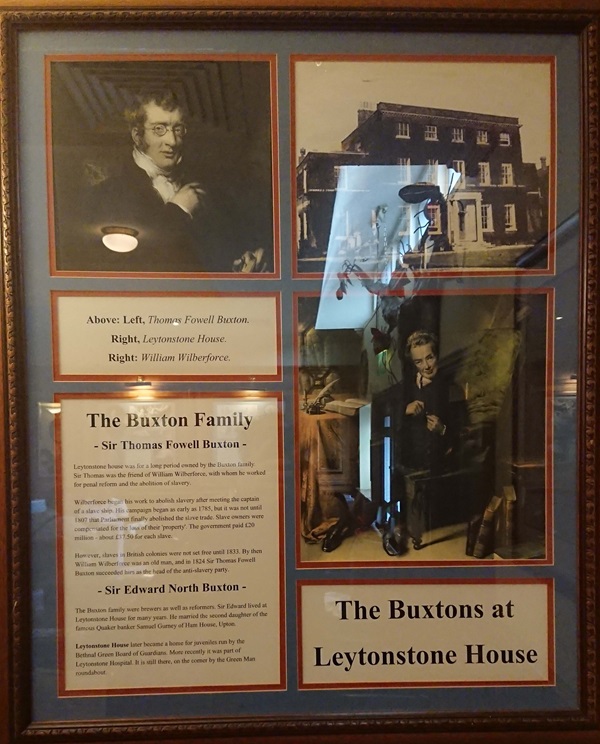
The text reads: Leytonstone house was for a long period owned by the Buxton family. Sir Thomas was the friend of William Wilberforce, with whom he worked for penal reform and the abolition of slavery.
Wilberforce began his work to abolish slavery after meeting the captain of a slave ship. His campaign began as early as 1785, but it was not until 1807 that Parliament finally abolished the slave trade. Slave owners were compensated for the loss of their ‘property’. The government paid £20 million – about £37.50 for each slave.
However, slaves in British colonies were not set free until 1833. By then William Wilberforce was an old man, and in 1824 Sir Thomas Fowell Buxton succeeded him as the head of the anti-slavery party.
The Buxton family were brewers as well as reformers. Sir Edward lived at Leytonstone House for many years. He married the second daughter of the famous Quaker banker Samuel Gurney of Ham House, Upton.
Leytonstone House later became a home for juveniles run by the Bethnal Green Board of Guardians. More recently it was part of Leytonstone Hospital. It is still there, on the corner by the Green Man roundabout.
A photograph of Hollow Pond, Leytonstone, c1910.
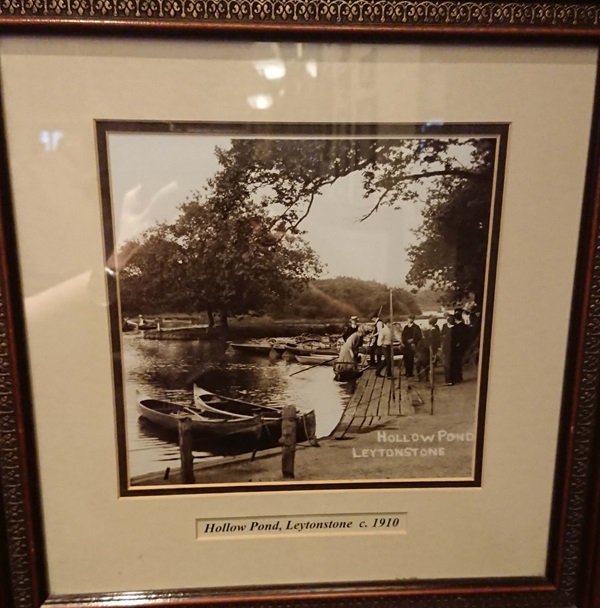
A photograph of High Road, Leytonstone, c1920.
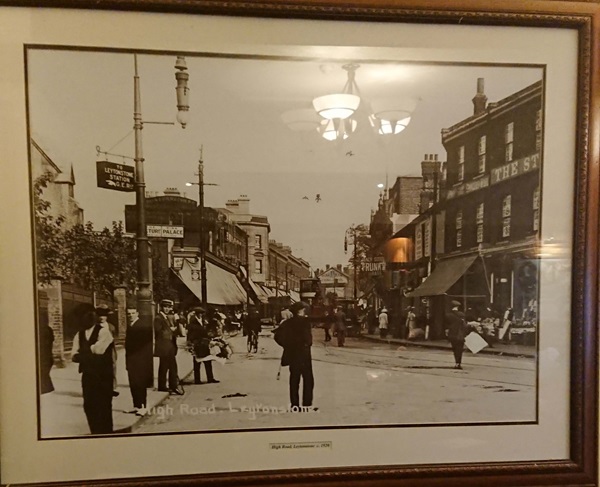
If you have information on the history of this pub, then we’d like you to share it with us. Please e-mail all information to: pubhistories@jdwetherspoon.co.uk